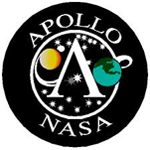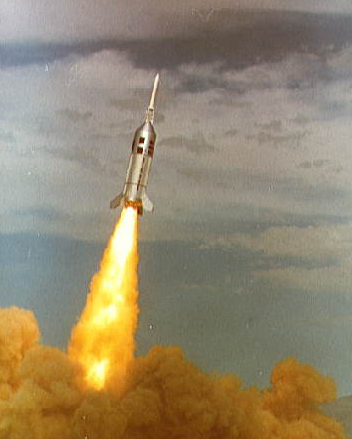Research and Analysis
An Apollo 50th Anniversary Moment
Written by: developer

Testing the Lifeboat
by John Holst, Space Foundation Research Analyst
A rocket rose on a plume of flame from New Mexico’s desert on a January 1966 morning. The Little Joe II rocket (pictured) reached an altitude of 24 kilometers (15 miles), then seemed to fail, tumbling across the sky. Little Joe’s payload, an unmanned Apollo command module, sensed the tumbling and fired its abort rockets, separating and carrying it safely away from the tumbling rocket. Once away, the command module automatically deployed a parachute and landed without drama back in New Mexico’s desert. The tumbling rocket and module separation went according to plan: it was a successful launch abort test.
 The command module contained the spacecraft’s control center, where Apollo’s astronauts worked and lived during their voyage to the Moon. It was also their lifeboat during launch, and theoretically protected the astronauts with its systems. The unmanned test proved that the command module’s escape and impact systems could provide protection for the astronauts during a launch emergency. It was another small, but critical step, for Apollo.
The command module contained the spacecraft’s control center, where Apollo’s astronauts worked and lived during their voyage to the Moon. It was also their lifeboat during launch, and theoretically protected the astronauts with its systems. The unmanned test proved that the command module’s escape and impact systems could provide protection for the astronauts during a launch emergency. It was another small, but critical step, for Apollo.
Protecting astronauts during launch with sophisticated emergency systems continues today as space agencies and industry take measured steps toward launching people from U.S. soil into space again. NASA conducted its first successful pad abort test of the Space Launch System’s Orion capsule in May 2010. In December 2014, the agency successfully tested the Orion’s re-entry systems. In May 2015, SpaceX proved its Dragon capsule’s emergency systems during a pad abort test. Both pad abort tests lasted only a couple of minutes, with emergency rockets shooting test capsules great distances from their launch pads in seconds. Ranging from a half a kilometer to nearly two (1/3 to 1.25 miles), the distances give time for capsule parachutes to open and move the capsules away from an exploding rocket. Neither tested system has yet to be launched with a crew on board, but both play a role in human space operations and exploration.
The Soyuz is the only line of spacecraft to have used its emergency launch abort systems due to a launch problem. In September 1983, the 94th human space launch conducted by the Soviet Union came to a spectacular end when a launch pad fire engulfed the rocket. A command activated the capsule’s rocket motors, moving the capsule up and away from the ruined rocket, reaching a velocity of Mach 1 (1225 km/h or 761 mph) and an altitude of 3,000 feet. The cosmonauts were safe, if a little bit shaken — they had endured 14-17 G during the capsule’s rapid acceleration. The fire that consumed the rocket continued to burn for another 20 hours.
Crew safety is an inherent goal of any launch abort test and for space missions from Mercury, Gemini and Apollo through the current human spaceflight programs. However, in spite of the engineering, the technical work, and “what ifs,” the Russians left out some key items in the Soyuz capsule’s emergency supplies. The omission, highlighted in the first request the surviving Soviet crew had once they exited their capsule, was this: cigarettes and vodka.
This article is part of Space Watch: January 2016 (Volume: 15, Issue: 1).

